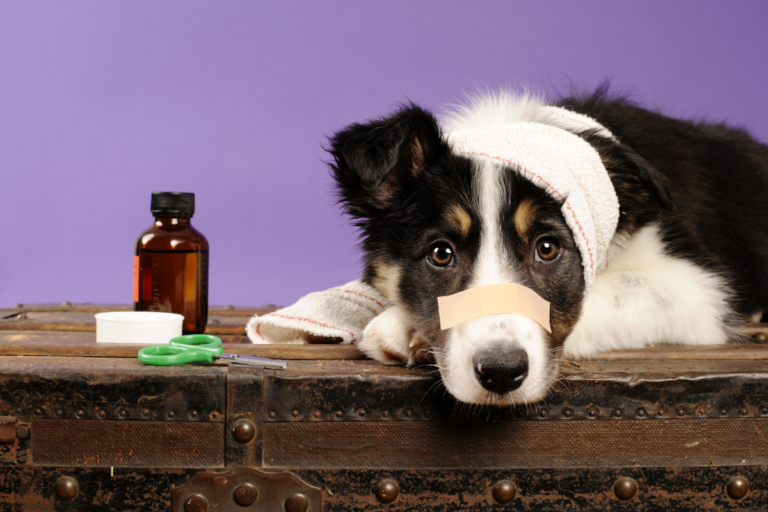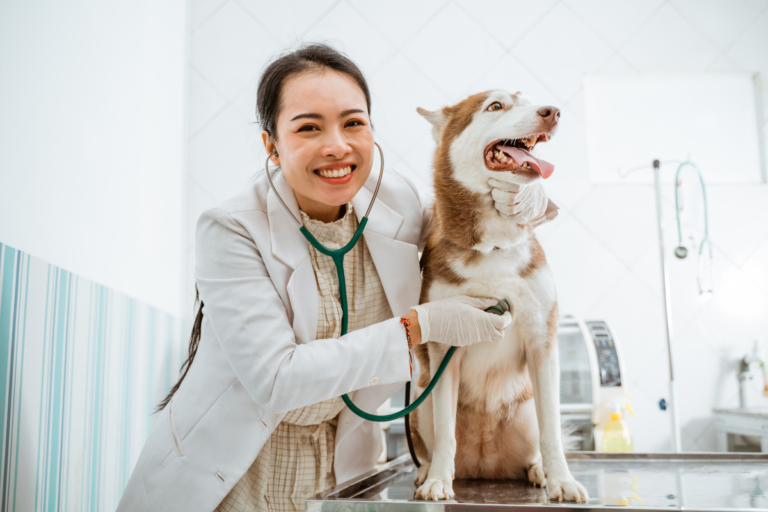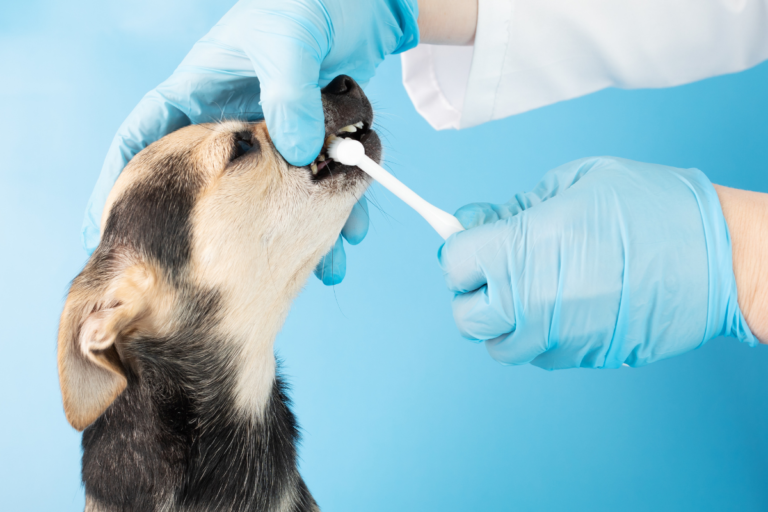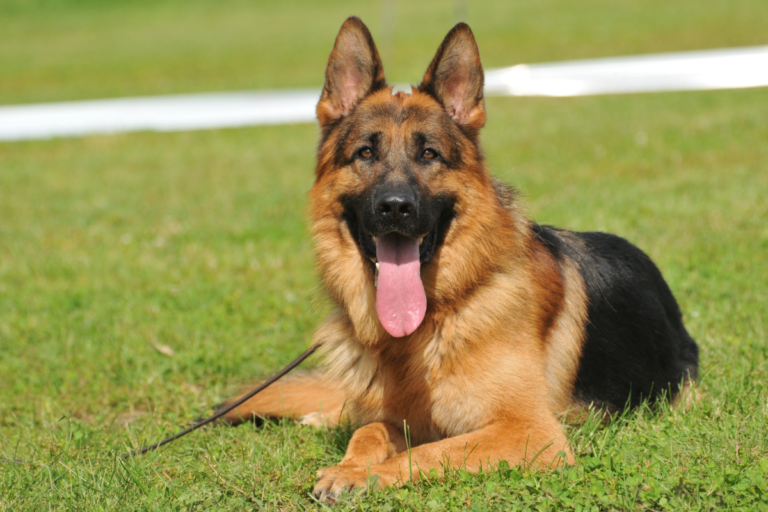The Tooth Truth: Safeguarding Against Dental Disease in Dogs
Dental Health in Dogs
We’re on a mission to keep our pooches’ chompers in tip-top shape! Knowing the usual suspects in dental issues and staying on top of oral hygiene can really keep them tail-waggingly healthy.
Common Dental Conditions
Dental woes in dogs are as common as squirrels in parks, and can cause big-time problems if ignored. Let’s talk about some usual dental dramas:
- Periodontal Trouble: Almost 80% of our four-legged pals run into this by the age of three. It kicks off with gingivitis and can snowball into a serious condition called periodontitis if it stays unchecked. This can mess with their kidneys, liver, and even their heart.
- Gum Grumbles (Gingivitis): This early gum gripe can turn nasty if ignored, leading to periodontitis. Spotting it early means you can nip it in the bud (Vetster).
- Tooth Troublemakers (Fractures): Dogs with a chew-happy attitude on hard stuff might end up with a broken tooth or two, leading to agony and infection (Vetster).
- Tartar Tantrums: When plaque overstays its welcome, it turns into tartar. This only spells more dental disasters if left unattended. Routine scrubbing keeps tartar tantrums away (VCA Hospitals).
| Dental Condition | Prevalence | Impact |
|---|---|---|
| Periodontal Disease | 80% of dogs by age 3 | Major health headaches |
| Gingivitis | Early stages in many dogs | Containable with quick action |
| Tooth Fractures | Often in chew-happy dogs | Leads to infection and discomfort |
| Tartar Buildup | Grows with age, unchecked | Causes periodontal problems |
Importance of Dental Care
Taking care of our dogs’ pearly whites is not just about ditching doggy breath. It’s a passport to their overall health:
- Pain Patrol: Dental disease can hurt! Keeping teeth and gums healthy keeps our furry pals from needless pain.
- Sidelining Systemic Issues: Bad dental health isn’t just a tooth thing—it can result in kidney, liver, and heart drama (AVMA).
- Life Extender: Healthy mouths mean more years of furry adventures and wagging tails.
Everyday dental care includes:
- Professional Peartooth Scrubbing: Regular vet wellness visits catch and tame dental nuisances early.
- Daily Toothbrushing: The hero move to thwart dental diseases? Daily brushing with pet-friendly toothpaste.
Sniff out more on the connection between a healthy mouth and a healthy pup in our periodontal disease in dogs section.
Showing love through dental care keeps our loyal companions happy and healthy. For more tips on keeping Rover’s smile bright, visit our canine dental guide.
Periodontal Disease in Dogs
Prevalence and Impact
Periodontal disease is the sneaky villain of doggie dental problems, striking 80% of our beloved pups by the tender age of three. This nasty condition isn’t just about doggy breath either. If ignored, it can lead to tooth loss, and worse, mess with a pet’s liver, kidneys, or invite a whole bunch of germs to hang out, potentially shortening their fun-loving lives. Small and brachycephalic (that’s short-nosed for you and me) dogs strut right into the problem club with their compact jaws and crowded toothy smiles. So, friends, a proactive approach to those routine dental checkups is like finding doggie gold.
Symptoms and Progression
Spotting periodontal disease early is like catching the cookie thief right before he strikes! Those sneaky symptoms can seem to develop quietly but make no mistake, they end up a big deal if overlooked. Here’s what to keep an eye (and nose) out for:
- Bad breath: Pretty much an olfactory fireworks display, the first sign of trouble.
- Red or swollen gums: Those gums should blush pink, not run around with redness and puffy inflammation.
- Bleeding gums: Often found after a bit of brushing action.
- Difficulty eating: A sore mouth can change your pup’s chow down attitude, maybe even cause some skinny jeans moments.
- Excessive drooling: Over-the-top dribble can equal mouth misery.
- Loose or missing teeth: As it ramps up, chompers start loosening their grip or decide to vacate the premises altogether.
Periodontal parties in your dog’s mouth throw down in stages, moving from a snug little gingivitis affair to a full-blown periodontitis rager.
| Stage | Description | Symptoms |
|---|---|---|
| Stage 1 | Gingivitis | The gums are slightly miffed and have plaque covering them, showing up as a hint of redness. |
| Stage 2 | Early Periodontitis | Uh-oh, things are heating up with more gum inflammation, a noseful of bad breath, and some erosion around the tooth roots. |
| Stage 3 | Moderate Periodontitis | Bone shrinkage, gum pulling back, and the occasional bleeding. Brace yourself for some tragic breath clouds too. |
| Stage 4 | Advanced Periodontitis | Major bone loss, teeth playing the wobbly dance, nasty breath, trouble chewing, and the possible empty spaces where teeth once were. |
Pictures are from our pals at Vetster.
We can’t stress enough how important it is to catch these stages early, preferably with a solid vet partner. Prevention is way better than playing catch up with treatment. Pals, brushing those pearly whites regularly and throwing a bone to good VOHC-approved dental chews can keep periodontal threats at bay. For the full story on prevention and management, check out our handy info spot on periodontal disease in dogs.
Treatment of Dental Disease
Keeping up with your dog’s dental health isn’t just for show. It’s a ticket to a happier, healthier life. Let’s chew on how we can tackle those pesky dental issues.
Professional Cleanings
About 8 out of 10 dogs start catching a case of gum disease by the age of two. That’s why professional cleanups are a big deal. To make the magic happen, your pooch gets a nap – under general anesthesia. During this, they get:
- Scaling: Removing all the unwanted grime from the teeth and gums.
- Polishing: Buffing teeth for a sparkling shine and reducing future gunk.
- Dental Exam: A thorough look to spot any homely teeth needing TLC.
Once tartar hardens, brushing won’t cut it. You’ll need the big guns like polishing to keep those chompers happy (VCA Hospitals). Looking for more chewing facts? Our dog gum disease page can spill the beans.
Extraction and Root Canals
Sometimes, when the damage gets hefty, we’re talking years of tartar party leading to tooth loss (Merck Veterinary Manual), heavier artillery’s needed. The nitty-gritty involves:
Extractions
Occasionally, yanking out a bad tooth is just what the vet ordered. Losing a tooth might sound rough, but it ditches pain and infection, making life way comfier for your barky buddy. Sniff around our dogs teeth section for the scoop.
| Condition | Usual Fixes |
|---|---|
| Gingivitis | Pro Clean, Antibiotics |
| Early Gum Trouble | Pro Clean, Scaling |
| Advanced Gum Trouble | Extractions, Maybe Surgery |
See numbers from Merck Veterinary Manual
Root Canals
Root canals? Yep, dogs can get ’em, too. Especially if saving those pearly whites is in the cards. Here’s the spiel:
- Clearing Out: Uprooting nasty, infected pulp from inside.
- Filling It In: The tooth’s cavity gets filled up – no more trouble.
Looks complicated, but keeping those vital teeth in working order is a major win. Visit our periodontal disease in dogs page for how this all plays into their overall health.
Caring for your dog’s teeth through regular cleanups, extractions, and root canals can make a world of difference. By being proactive, we’re setting our furry pals up for smiles and tail wags all around.
Prevention Strategies
Keeping our pups’ teeth in tip-top shape is key to their overall health and joy. Here’s how we can keep their pearly whites shining and avoid any dental problems.
Dental Checkups
Regular trips to the vet aren’t just for shots and belly rubs. Checking your dog’s teeth is just as important. Spotting the first signs of gingivitis early can save your furry pal from more serious gum issues later on. Those professional cleanings aren’t just spa days for dogs; they’re preventative care must-dos that our vets swear by.
Try to get those oral check-ups and teeth cleanings on your calendar once every year. These vet visits are like dental deep-cleaning sessions that you just can’t DIY at home. Meanwhile, using a trusted dental care routine with approved products can help extend that fresh-breath feeling.
| Dental Care Steps | How Often? |
|---|---|
| Pro Cleaning | Annually |
| Vet Dental Exams | Annually |
| Under-Anesthesia Assessment | When Needed |
Adding food or water additives, dental chews, and maybe tweaking their diet can make a world of difference in their oral hygiene game.
Chewing Habits
Dogs already have a natural love for gnawing, so why not make it work in their favor? Picking toys or chews that are good for their teeth not only keeps them entertained but also helps fight off plaque and tartar. It’s like a two-for-one deal—happy pup and healthier gums.
| Chewing Goodies | What They Do |
|---|---|
| Dental Chews | Battle plaque, freshen breath |
| Safe Toys | Entertain and maintain teeth |
| Dental Rinses | Fight harmful bacteria, freshen up |
Don’t skip brushing, though! Making this a regular ritual, maybe even daily, gives them the extra coat of protection against dental disease. For us folks seeking alternatives, there are always medicated chews or specialty dental diets.
Keeping your pup’s mouth clean combines home habits with those vital vet visits. To get the full rundown on doggie dental care, check out our nifty guide on dogs teeth. A clean mouth equals a wagging tail!
Dental Health and Overall Well-being
Looking after our good ol’ pups’ pearly whites isn’t just about winning the freshest breath award. Dental health for our furry pals is a big piece of the puzzle for their overall well-being. Bad teeth can mess up their whole system, impacting how they rock their doggy lives on a daily basis.
Link to Systemic Health
Keeping our doggies gum disease-free isn’t just about skipping the stink; it’s a serious deal for their whole body health. When left unchecked, periodontal disease — which sneaks into the mouths of about 80% of dogs by age two (Vetster) — can stir up a storm of health troubles. Those nasty bacteria can hitchhike from the mouth to key organs, stirring up storms like liver or kidney disease.
That’s why hitting up the vet for regular dental check-ups is super important. Finding sneaky gingivitis early can stop it from turning into something uglier and help dodge bigger health problems. Quick action keeps our dogs feeling top-notch!
| Health Headaches | Potential Fallout |
|---|---|
| Periodontal Disease | Liver Trouble, Kidney Woes, Nasty Infections |
| Broken Chomper | Ouchie, Infection, Hard Time Eating |
Need the scoop on how keeping those teeth clean meshes with heart health? Check out our guide on dog heart disease.
Effects on Quality of Life
Let’s get real, bad teeth can turn a dog’s world upside down. Dental issues can hurt bad enough to turn snack time into a misery, leading to them losing weight or missing out on important nutrients. Ongoing pain from cracked teeth or raging gum disease can throw a wrench in their mood, making them less interested in noshing or playing.
But don’t sweat it, snapping up their dental health with regular scrubbing, good chew toys, and keeping an eye out for any funny business can really make their lives better (Vetster).
| Quality of Life Bumps | What You’ll Notice |
|---|---|
| Hurting | No Appetite, Pouting, Couch Potato Status |
| Trouble Munching | Drop in Pounds, Nutrient Deficit |
Want to make sure your doggo’s chompers are in tip-top shape? Check out our piece about dog gum disease and bone up on chewing habits to keep their teeth happy and healthy.
By keeping a close eye on dental care, we can help our furry companions dodge painful tooth woes and lead their best, tail-wagging lives. For more info, dig into our articles on canine dental and the wide variety of dog diseases and symptoms for extra tidbits.
Heart Disease in Dogs
Heart disease in dogs is a tough nut to crack, often sneaking up on our pups and throwing a wrench into their happy-go-lucky lives. By knowing the types, how common it is, and what signs to watch out for, we can give our pooches the TLC they need to keep their tails wagging.
Types and Prevalence
Alright, so here’s the lowdown: dog heart disease mostly comes in two flavors – chronic valvular disease (CVD) and dilated cardiomyopathy (DCM). Most pups fall victim to CVD, making up 70-75% of the cases. It’s the heart valves that take a hit, slowly wearing out over time. Little fellas like miniature poodles, dachshunds, and those adorable Cavalier King Charles spaniels often find themselves in the crosshairs of CVD as they age (Medivet).
DCM’s a bit of a big dog problem, with larger breeds like Dobermans, Boxers, and Great Danes getting caught in its net. In this case, the heart gets too big for its britches, with weakened muscles causing all kinds of chaos. About 10% of all dogs might deal with heart disease somewhere down the line.
| Heart Disease Type | Prevalence (%) | Affected Breeds |
|---|---|---|
| Chronic Valvular Disease (CVD) | 70-75% | Miniature Poodles, Dachshunds, Cavalier King Charles Spaniels |
| Dilated Cardiomyopathy (DCM) | 25-30% | Dobermans, Boxers, Great Danes |
Signs and Symptoms
Keep an eagle eye out for signs of heart disease in your canine buddy, so you can nip things in the bud. If you hear a nagging cough, especially when the moon’s out, it might be fluid in the lungs talking. If your dog is dropping faster than a poorly-timed joke, struggling to catch a breath, or just plain tuckered out, it might be time for a vet visit (dog heart failure).
Beyond physical signs, their behavior could spill the beans too. A dip in appetite, moments of solitude, or losing interest in their favorite games could all hint at heart trouble. In your routine check, be on the lookout for:
- Persistent cough
- Fainting spells or collapses
- Breathing troubles
- Energy dives and lethargy
- Ho-hum appetite
- Withdrawal and behavioral shifts
Catching these signals early and getting your dog to the vet can make all the difference. For more dots to connect about keeping your pup’s ticker in top shape, meander over to our piece on dogs heart.
If snooping around related doggy ailments tickles your fancy, check out our guides on dog diabetes symptoms, periodontal disease in dogs, and bloat symptoms dog. Remember, taking care of their chompers might just keep heart issues in check too.






